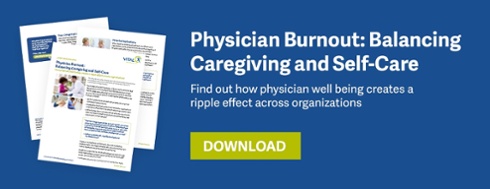 Physician well being has far-reaching impacts, affecting patient satisfaction and outcomes, organizational costs, team morale levels and personal work-life balance. When burnout occurs, the ripple effect can be dramatic.
Physician well being has far-reaching impacts, affecting patient satisfaction and outcomes, organizational costs, team morale levels and personal work-life balance. When burnout occurs, the ripple effect can be dramatic.
Addressing physician well being requires a long-term, multi-layered approach. Before starting, consider these steps:
Consider scheduling and hours
Some physicians may think cutting back on their hours is a sign of failure, according to Robert Leschke, MD, an emergency department physician and physician peer coach. Also, they could claim “everyone works long days,” normalizing those schedules.
Yet trimming a schedule down by even a few hours a week can make a big difference. It can help physicians feel as if they have more breathing room and could also provide more time for resiliency building activities like exercising, spending time with family and getting more sleep.
Create more social connections
When physicians are leaning toward burnout, social connections are often neglected, Dr. Leschke notes, even though those are part of building and maintaining well being.
“It’s helpful for organizations to create regular social events and for physicians to make an effort to connect with others,” he says. “That makes it easier to communicate as a physician when you’re having trouble.”
Consider peer coaching
Speaking with those who are at the same level professionally and have gone through similar issues can be very helpful for reducing the feeling of isolation a physician may have, according to Dr. Leschke.
“Connecting with a peer can be powerful,” he says. “You tend to feel more understood with someone who’s gone through your situation and come out on the other side.”
Recognize the issue is about more than individuals
Truly enhancing physician well being requires an organization-wide approach, according to Dr. Leschke. For physicians, it’s crucial to see an organization as a source of assistance, not another source of stress.
“Practitioners often feel isolated when burnout occurs,” he says. “They may not feel supported by an organization, especially if they’re working in a high-performance culture where it’s difficult to have a vulnerable conversation.”
Overall, tactics like these can benefit both physicians and their organizations. These are first steps in what should be a comprehensive approach using numerous strategies, but sometimes, the first step can be the most difficult.



